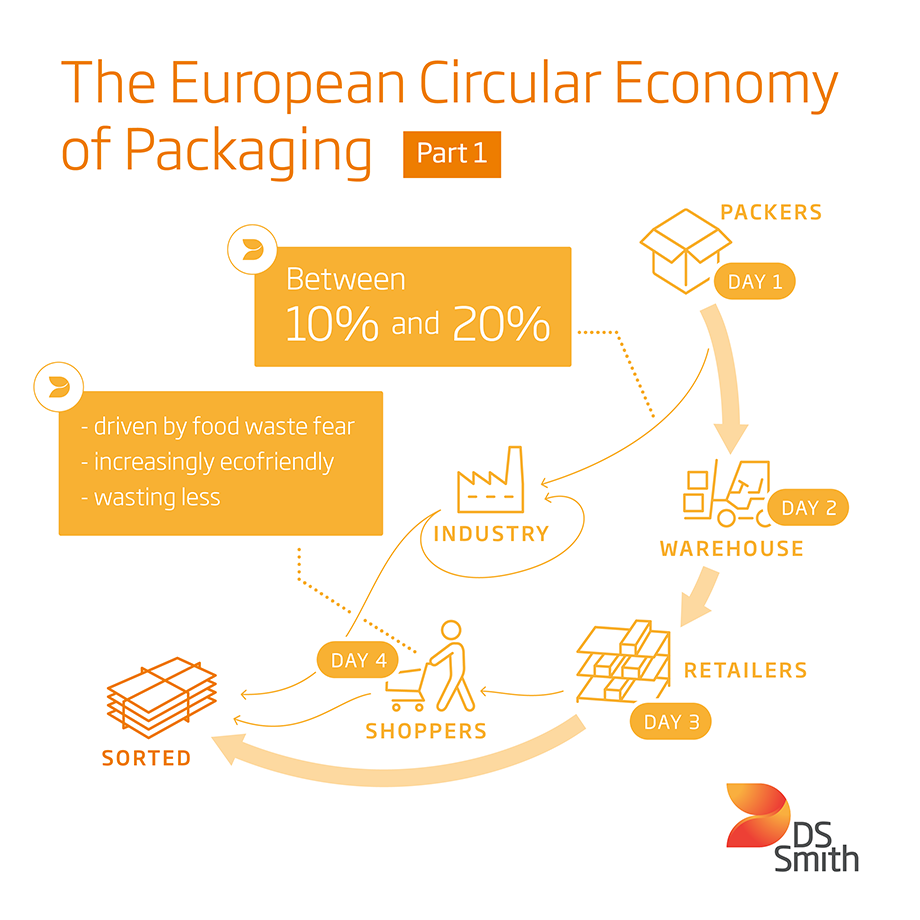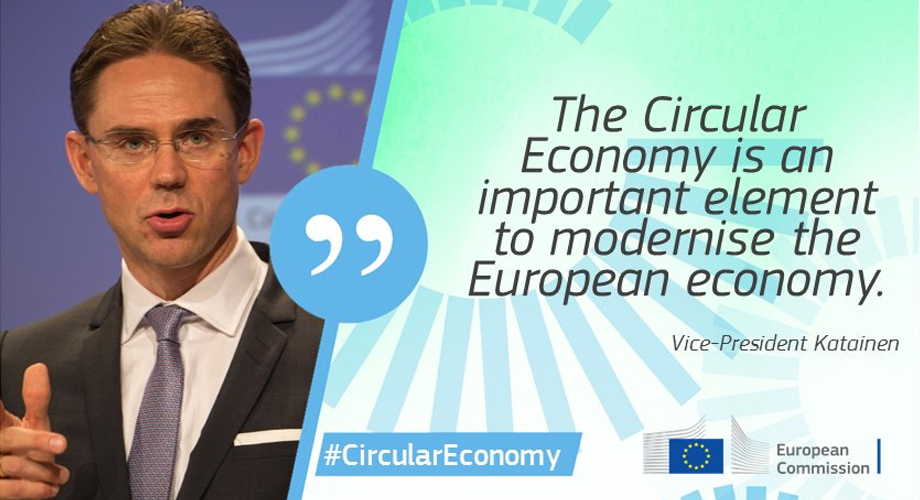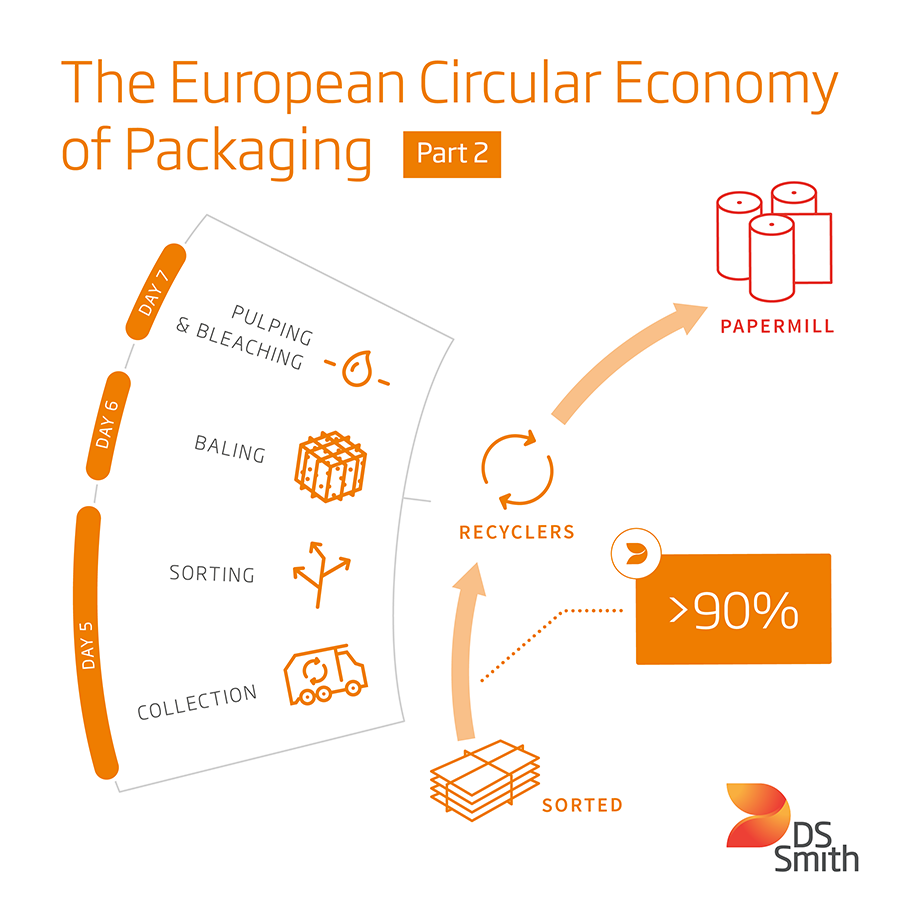Consistency and quality are key to achieving a circular economy
By Mark Greenwood, Group Health, Safety and Environment Director at DS Smith
It’s been over a year since the Circular Economy Package was adopted by the European Commission in a bid to support the transition towards a more circular economy in the EU. As one of Europe’s leading packaging manufacturers, we’re right at the heart of this movement and are doing everything in our power to reduce waste and produce packaging that is as sustainable and efficient as possible.
We must address inconsistency
In our view, any step to reduce waste is a positive one, and we fully support the principles behind the package. Setting higher targets for waste reduction is without a doubt a positive step in the right direction. However, the European Institutions must be alert to the potential negative impact of imposing even more stretching targets on countries that are already struggling from a recycling perspective. It’s so important that the process for recycling is consistent across the EU, but the reality is that currently we’re not even consistent within individual countries. It’s not unusual for recycling processes to differ from region to region. It does nothing to advance recycling, and indeed the reputation of recycling, to offer different recycling capabilities to residents who share exactly the same waste production patterns. We must address this inconsistency and ensure that every country in the EU has the required infrastructure and resources to properly implement recycling.

Quality remains key
Furthermore, whilst we are in full support of compelling businesses and communities to be more sustainable and work towards a more circular economy, we are concerned that by chasing targets we could be in danger of losing the quality of recycling. Poor quality recycling has many detrimental effects; apart from increasing waste and cost in the manufacturing process, materials intended for recycling actually end up being burnt or even landfilled if they are heavily contaminated. The key to keeping quality high is proper segregation of recyclables. Better segregation means less contamination, and materials that are segregated as soon as consumers and business discard them, provide the highest quality recycling. It’s vital to get the balance right between quality and quantity, but also to ensure it’s as easy as possible to recycle using infrastructure that facilitates high quality recycling.
Let’s be sustainable and not just talk about it
Another significant benefit of the Package is that it brings into sharp focus the requirement to do things more sustainably. This is something that our customers are already very focused on, but nonetheless it’s a good reminder for the wider business community. Organisations need to have meaningful sustainability goals and be transparent to avoid being labelled green washers. In the past some organisations have been accused of talking about sustainability but actually doing very little to positively improve their impact on the environment.
Packaging and recycling take centre stage
DS Smith plays a fundamental role in the drive towards a more sustainable future, and packaging, and recycling, are major enablers of a circular economy. Good packaging prevents waste and our team of packaging strategists always strive to find the best packaging solution, using no more material than necessary. That being said, one of the principle roles of packaging is to protect the product and if we don’t use enough material and products become damaged, it has a negative environmental impact. This is especially relevant in the context of the significant growth of e-commerce, with more complex supply chains and higher return rate of goods. Better, smarter packaging is the key to enabling a circular economy.
A circular economy should be our overall goal and corrugated packaging in particular is an essential part of a closed loop recycling process that minimises waste. In fact, we can go from box to box within 14 days with our closed loop model which allows cardboard boxes to be made, used, collected, recycled, pulped, pressed and made back into cardboard boxes again, from start to finish in as little as two weeks.
The waste hierarchy
However, we must also remain realistic and understand that true closed loop is incredibly difficult. The number one priority should be keeping materials in society and giving them a second use. However, we cannot ignore the fact that for now at least, other methods such as waste to energy serve a necessary purpose. Whilst recovering energy from waste is better than confining the waste to landfill, we should be mindful not to build an over reliance on waste to energy as a solution. We should guard against materials that can be recycled ending up in waste to energy plants. Crucially we can only recover energy once from a material, but if it can be recycled it can continue to add value to a circular economy right up until the point where it is no longer practical to recycle and energy recovery becomes the next best thing.
Looking to the future
Moving forward, it will be vital that we see more consistency with recycling, across regions and nations and that we make it easy and accessible for people and businesses to recycle. This is particularly important as the rise of e-commerce means more and more packaging that could be recycled is ending up in the hands of consumers, where recycling rates are significantly lower than in business.
Finally, we must ensure it is financially viable for small businesses, as well as large businesses to take the sustainable route. Recycling can be financially beneficial and this needs to be realised across the business community. Ultimately, doing the right thing isn’t always enough of a driver for businesses, but highlighting the impact it can have on their bottom line will get them moving in the right, circular direction.
